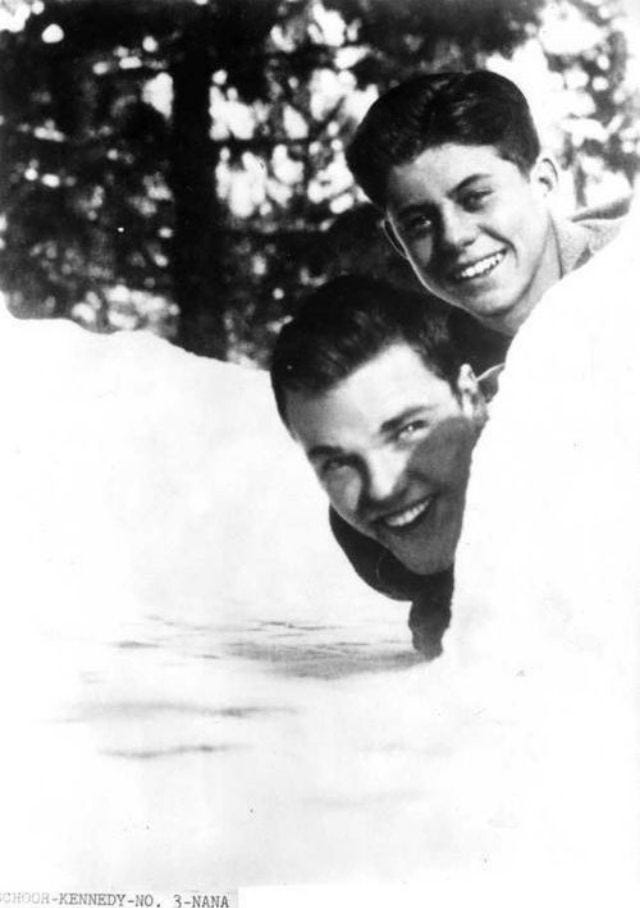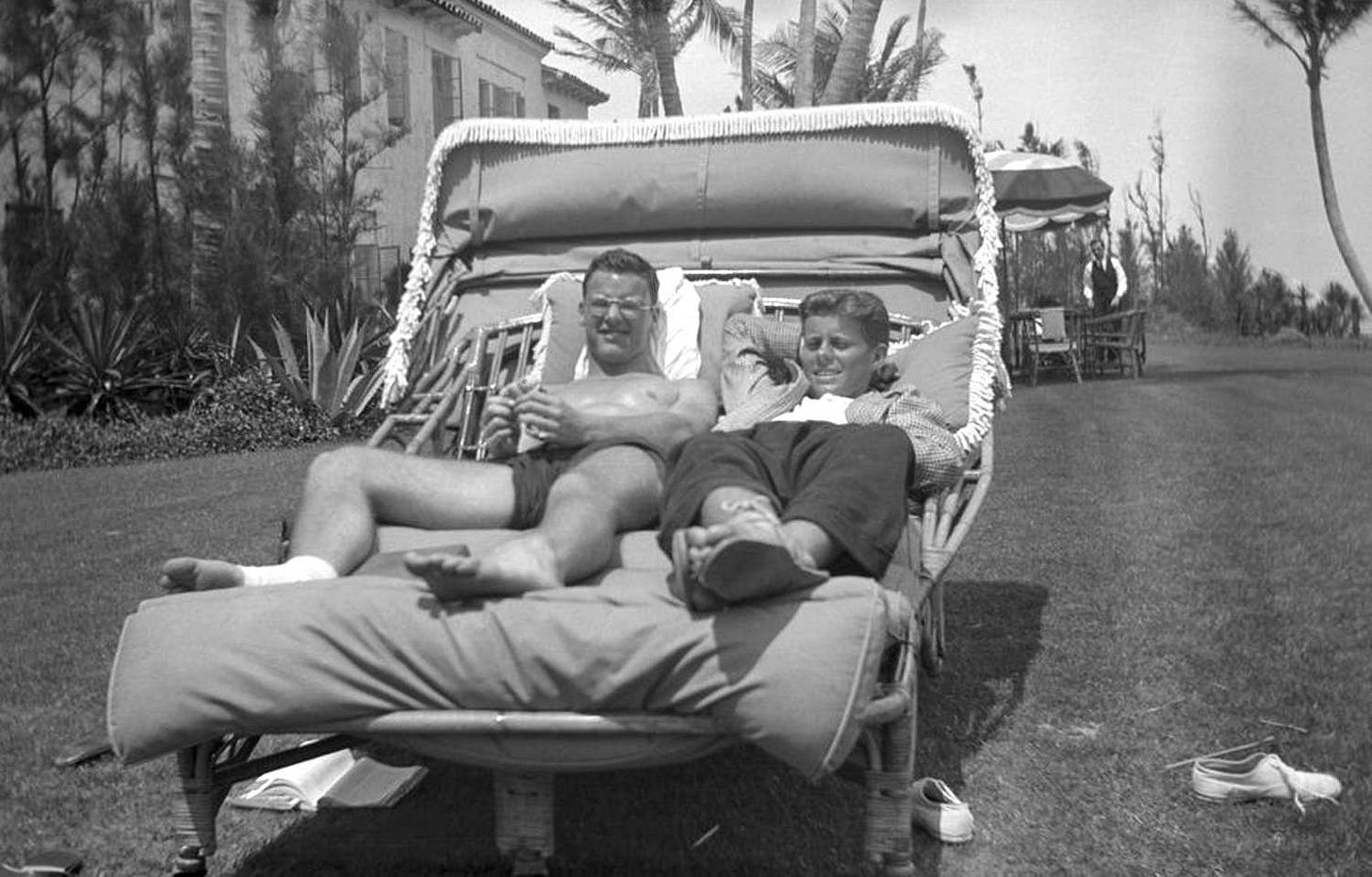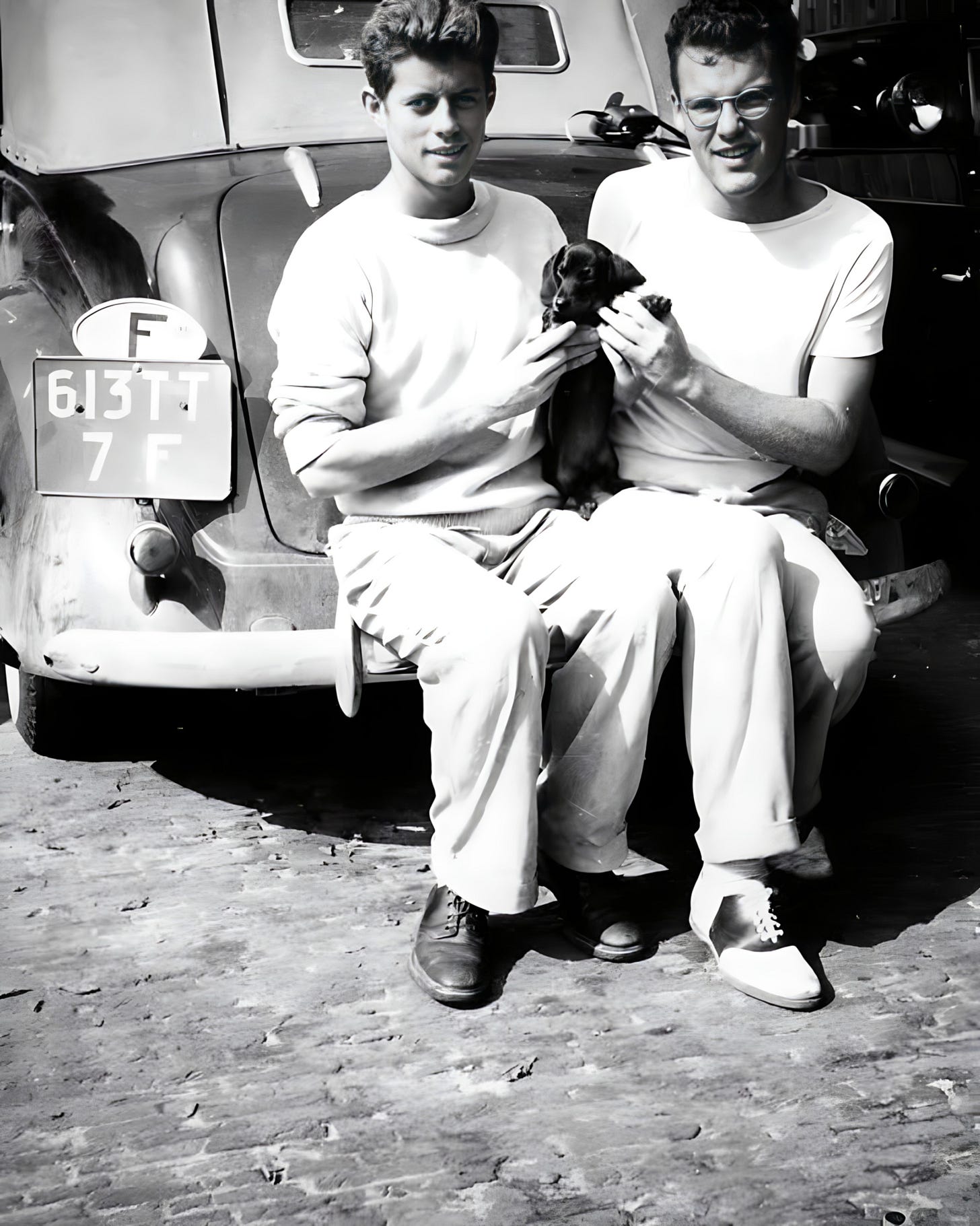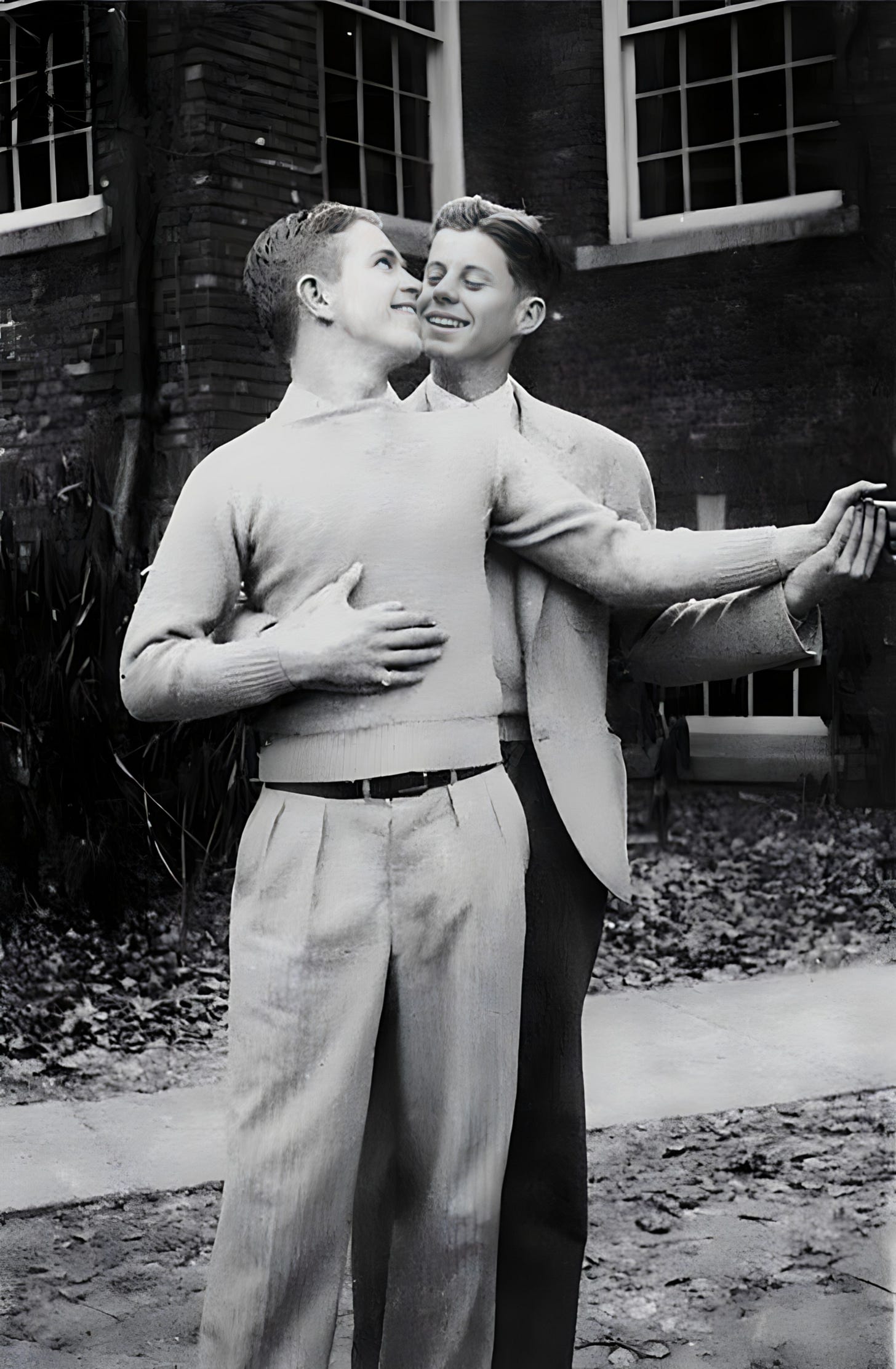The Secret Love of JFK and Lem Billings: America's First Gay Presidential Romance?
Jack and Lem: inside JFK's closest, and possibly gay, relationship.
John Fitzgerald Kennedy is often remembered as the epitome of American masculinity and charm. But behind his celebrated charisma and magnetic appeal lies an intriguing chapter in his life—his deeply intimate relationship with lifelong friend Kirk LeMoyne "Lem" Billings. Although officially presented as platonic, their friendship has sparked decades of speculation, leaving historians and LGBTQ+ audiences alike captivated by the possibilities.
Here's the extraordinary story of Jack and Lem, two young men whose friendship blossomed into a bond strong enough to span decades, politics, and possibly even romance.
Who Was Lem Billings?
Kirk LeMoyne "Lem" Billings was born on April 15, 1916, into a wealthy, privileged family in Pittsburgh. Tall, engaging, and notoriously quick-witted, Lem met John F. Kennedy in 1933 at the prestigious Choate boarding school in Connecticut. From the beginning, Lem was openly gay within his close circles, though discreetly so, given the harsh social attitudes of the 1930s and '40s.
Lem quickly became Jack’s closest confidant, sharing a camaraderie that exceeded typical friendships. Their bond was so immediate and intense that their classmates at Choate often commented on it, noting their inseparability and undeniable affection for each other.
A Youthful Connection: Choate and Beyond
At Choate, Billings and Kennedy quickly became inseparable. Their correspondence from this period reveals an emotional depth rarely seen between male friends of that era. In one playful but intimate exchange, Billings once wrote Kennedy a note on toilet paper—a gesture many have interpreted as romantic—prompting Kennedy's humorous yet coy response: “Please don’t write to me on toilet paper anymore. I’m not that kind of boy.”
Despite JFK's playful rebuttal, their bond intensified. The two young men spent summers traveling together, exploring Europe, and sharing adventures that solidified their lifelong connection.

Lem Billings in JFK’s Inner Circle
Their closeness endured into adulthood, with Billings maintaining unprecedented access to Kennedy, even after JFK became president. Remarkably, Lem had his own room at the White House, an arrangement highly unusual for any presidential friend, let alone an openly gay man in mid-century America.
He was a fixture on vacations, family events, and state visits. The Kennedy family warmly embraced Lem, accepting him as an honorary member. But beneath the surface of this seemingly open acceptance lay a question that intrigued many: was Lem more than just JFK’s best friend?
Intimacy and Speculation: More Than Friends?
Rumors of a deeper, intimate relationship between Jack and Lem have persisted for decades. David Pitts, author of Jack and Lem: The Untold Story of an Extraordinary Friendship, argues that the friendship exhibited emotional intimacy rarely seen among male friends of that era. According to Pitts, their lifelong bond held a special emotional weight, filled with undertones of affection that transcended friendship.
Moreover, author Lawrence J. Quirk reported that Billings privately confessed to him that his relationship with Kennedy involved sexual intimacy, specifically oral sex, "with Jack always on the receiving end." Although Quirk’s claim cannot be fully authenticated, it has added fuel to speculation and offers a glimpse into a relationship possibly deeper than publicly acknowledged.
Still, there was no shortage of witnesses who noticed an unusual closeness. Friends and colleagues, some perhaps uncomfortable with or unaccustomed to such intimacy between two men, nevertheless respected Lem’s unshakable position in Kennedy’s life.


Social Constraints and Hidden Desires
In mid-20th-century America, homosexuality was taboo, stigmatized, and often criminalized. Openly gay public figures simply did not exist. For Kennedy, a rising star in a staunchly conservative political world, public knowledge of a gay relationship would have ended his political career before it began.
Yet, Kennedy never distanced himself from Lem. Even during his marriage to Jackie, Lem remained present and beloved within the family. Jackie herself reportedly respected Lem deeply, viewing him as JFK's most trusted friend. Some historians suggest that Lem’s presence was comforting to Jackie because it allowed her husband emotional intimacy without the threat of infidelity—a complicated dynamic that speaks volumes about their unique relationship.
A Timeless and Tragic Bond
Their friendship outlasted Kennedy’s presidency and even JFK himself. Lem Billings was devastated by Kennedy’s assassination in 1963. For the rest of his life, Lem never fully recovered from the loss of the man he had once called his "best friend," "greatest companion," and "other half."
After JFK's death, Lem continued to stay close to the Kennedy family, mentoring JFK’s nephew, Bobby Kennedy Jr., and serving as an emotional pillar for the grieving family.
Lem himself passed away in 1981, but their shared story continued to fascinate historians, LGBTQ+ communities, and anyone drawn to the complexities of hidden love. He requested to be buried in proximity to JFK’s grave—an enduring testament to the intensity of his feelings.
The Unanswered Question: Did They or Didn’t They?
Ultimately, whether JFK and Lem’s friendship crossed into romantic territory remains officially unanswered. What is clear, however, is that their relationship defied traditional definitions of friendship for the era. The available historical evidence, combined with testimonials and private recollections, strongly hints at an intimate bond that extended beyond simple friendship.
Historian Nigel Hamilton put it succinctly: “There was definitely something unusual and special there. Whether it was physical, emotional, or both, we can’t definitively say—but it was clearly more than just a friendship.”
Why Their Story Matters Today
JFK and Lem Billings’s relationship reminds us of a historical truth often ignored or erased: LGBTQ+ relationships have always existed, even at the highest echelons of society. Whether explicitly acknowledged or discreetly lived, their connection matters deeply in the ongoing fight for LGBTQ+ recognition and acceptance.
In an era when queer people had to live hidden lives, Jack and Lem’s closeness stands as a powerful testament to the enduring strength of love, friendship, and mutual support. Their story, intriguing and beautiful precisely because of its ambiguity, continues to inspire those who understand how deep, unspoken bonds can shape entire lifetimes.
Timeline: JFK and Lem Billings’ Lifelong Relationship
1933: JFK and Lem meet at Choate Preparatory School.
1937: Jack and Lem travel extensively through Europe, documenting their adventures.
1940s: Lem regularly spends time with JFK, attending family functions and social events.
1960: JFK elected President; Lem receives unprecedented access to the White House, including his own room.
1963: JFK is assassinated; Lem is emotionally shattered and remains closely connected to the Kennedy family afterward.
1981: Lem passes away; is buried near JFK’s Arlington National Cemetery resting place.
Final Thoughts: Celebrating Their Bond
We may never fully know the complete story of JFK and Lem Billings. Nevertheless, their connection remains a compelling, significant chapter of American and LGBTQ+ history. As society continues to grapple with issues of sexuality, friendship, and acceptance, we celebrate these hidden stories, honoring the lives of those who dared to love, openly or privately, against societal expectations.
Jack and Lem’s unique relationship endures as a poignant reminder that love, in whatever form it takes, can profoundly shape history.










This was amazing to read. Beautiful bond of two great people. I respect their bravery and commitment.